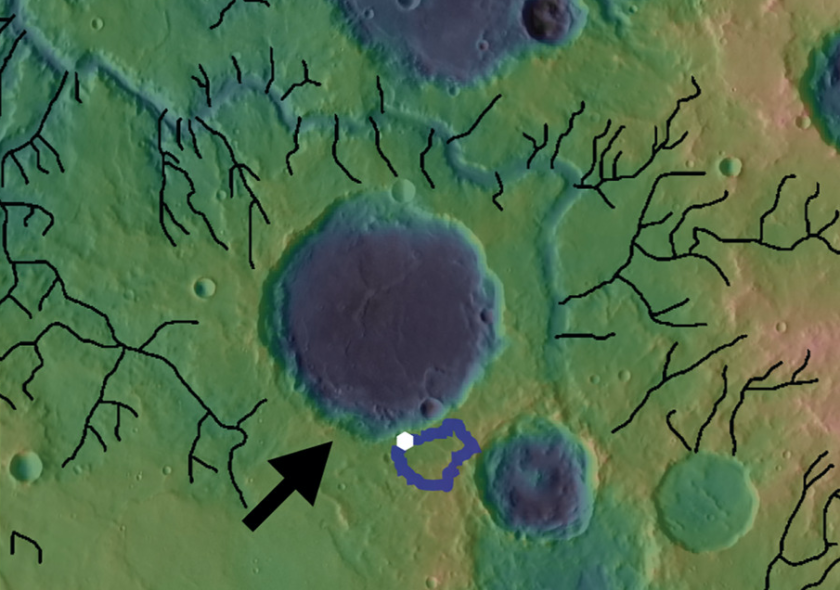Impacts Diverted Watersheds on Early Mars
January 19, 2023

A billion years ago, a massive rock slammed into Mars and gouged a crater into the surface the size of Houston. Back then, rivers flowed freely on the Red Planet and as water poured into the crater it cut a valley down its side that’s still visible today.
Mars is dotted with the remains of such crater lakes — impact craters that filled in with water from the surface. What’s long puzzled scientists, however, is why only some craters filled in as lakes, while others didn’t.

Now, research led by a graduate student at The University of Texas at Austin’s Jackson School of Geosciences, may have solved the mystery. After analyzing craters across Mars, the researchers found that crater lakes were most likely to form where water was already available, such as where the climate was wetter or in larger water catchment areas.
What’s more, the research shows that by diverting water into lakes the impacts kept water locked up in certain regions and stopped it flowing into others.
“We’ve shown how landscapes that are dominated by impact craters, such as on Mars and other planets, could prevent water from easily trickling downstream,” said the study’s lead author Emily Bamber, a doctoral student at the Jackson School. “It might help explain the observation by other scientists that Mars’ valleys are ‘less connected’ than valleys are on Earth.”
While it may seem obvious that the crater lakes formed where there was already water, the study is important because it rules out other factors such as the size and elevation of the crater. That will help scientists better understand Mars’s ancient water cycle and whether it could have supported life.
The study was published Dec. 15, 2022, in the journal Geophysical Research Letters.
For more information, contact Constantino Panagopulos, University of Texas Institute for Geophysics, 512-574-7376
